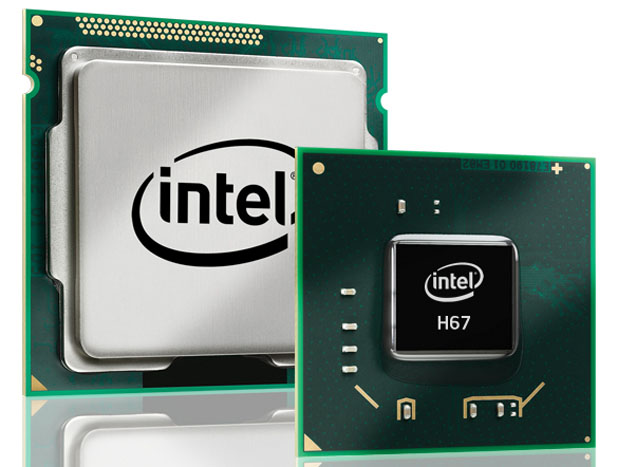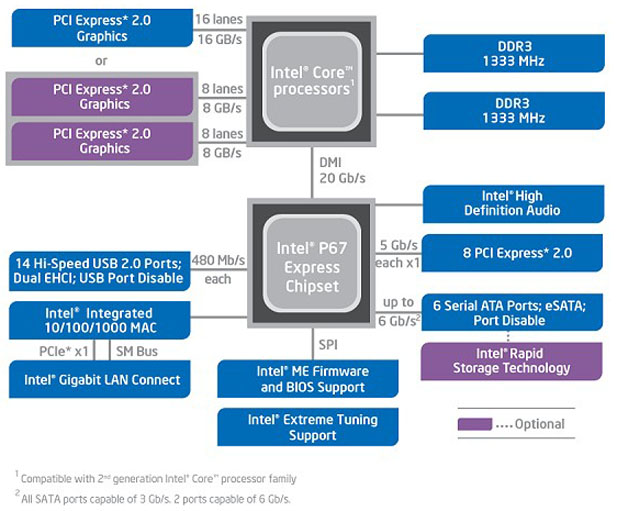
The True Cost of the Intel Sandy Bridge Cock-Up
Like a childhood popstar brimming with potential, Intel's new Sandy Bridge platform has gone from industry sweetheart to crack-addled monster in the blink of an eye. It greeted the world with a proud smile, wooing enthusiasts with its massive overclocking headroom, while also luring anyone interested in low power consumption and quiet PCs. We were blown away by the new CPUs when we first reviewed them, and it's now difficult to believe that this was just last month. Since then, however, the whole Sandy Bridge parade has been well and truly soiled by a flaw in Intel's supporting 6-series chipset.
After pledging to ship out sacks of fixed chips, as well as helping its OEM partners with any recall and replacement processes, Intel estimates that the whole fiasco is going to cost it at least $1 billion ($300 million in terms of lost revenue, and $700 million in terms of repair and replacement costs). That's a noble gesture, you might think, but this in no way represents the total cost to the industry of the whole situation.

Intel estimates that the 6-series chipset fiasco is going to cost it around $1 billion, but what other costs are there?
We decided to try to find out how the Sandy Bridge platform issue was really affecting the industry, but this wasn't easy. Out of over 20 companies we asked to take part, only a select few agreed to comment, and most of those were only prepared to do so on an anonymous basis, often giving us just a couple of sentences. Of course, this isn't just because Intel has a reputation for throwing its weight around, but also because some companies don't want to publicly reveal their financial situation ahead of any official statements.
But before we get on to the true cost of the Sandy Bridge cock-up, let's clarify the issue itself. We spoke to Intel's senior communications manager David Salvator in the US about this, who confirmed that 'the potential chipset issue involves a circuit layout design for second-gen SATA ports 2-5. He also noted that 'ports 0 and 1, which are third-gen SATA, are unaffected by this issue.'
We won't go into the full details of the causes of the issue here, but the problem basically concerns a transistor in the 3Gbps SATA circuit with an exceptionally thin gate oxide, which is fine if you want to switch on the transistor using a very low voltage, but it results in a lot of leaking current if you apply too much voltage to it, which is what's happening in some of Intel's 6-series chipsets.
Intel says the issue could cause 'degradation' over time, but what does this actually mean? Salvator explained that 'for a small number of systems using the Intel 6-series chipsets, second-gen SATA ports (2-5) could stop working, and any devices connected to those SATA ports would no longer be visible to the system.' Salvator also added that 'Intel now uses additional validation tests - the ones used to detect this issue - to ensure this chipset issue doesn’t occur again.' The current estimate floating around for the number of chipsets affected is 110,000 out of around 8 million chipsets that have been shipped.

The issue affects the 3Gbps SATA ports (2-5), but the 6Gbps SATA ports (0 and 1) are unaffected
So how big a deal is this, really? The answer depends on who you ask, and some people's reaction is to say that it's really an insignificant issue. After all, how many people really need all six SATA ports, particularly when motherboards such as the Asus P8P67 include a separate 6Gbps Marvell SATA controller anyway?
'The severity of the situation is relatively low,' a spokesperson from one retailer told us, 'and it doesn't affect everyone who wants Sandy Bridge – especially overclockers – some people are quite happy to put up with the issue on the basis that it's just a three-year degradation, and by that time they'll have probably binned the board and gone on to the new technology, whatever that is.'

MSI MPG Velox 100R Chassis Review
October 14 2021 | 15:04








Want to comment? Please log in.